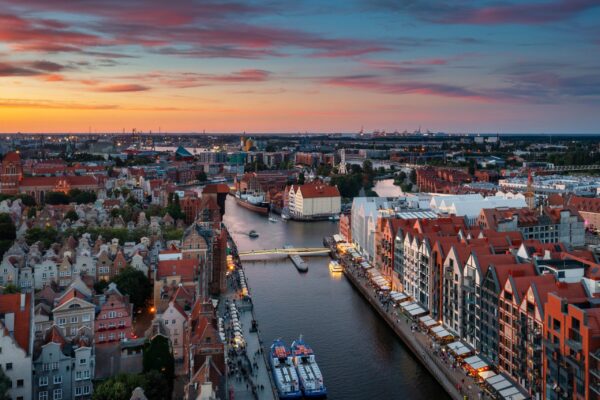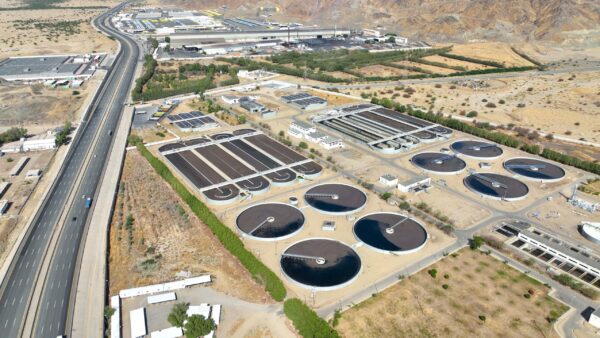
August 27, 2025 | Articles

When a destructive hurricane makes landfall, the focus of the government, aid agencies, and project managers/contractors is to mobilize quickly and start the cleanup and reconstruction work immediately. Yet, the severity of the hurricane’s impact upon the residents and infrastructure of the afflicted region depends on several variables. The location of the impacted area is one of the major considerations from a disaster recovery perspective.
Compared with the U.S. Gulf or Atlantic Coasts, disaster recovery in the Caribbean can be much more challenging precisely because of location.
This was apparent in September 2017 when Hurricane Irma slammed a series of islands along the Caribbean Sea with wind gusts up to nearly 225 miles per hour. The prime area of the hurricane’s devastation included Barbuda, Saint Barths, Anguilla, Sint Maarten/Saint Martin, the Virgin Islands, Turks and Caicos Islands, Cuba, Puerto Rico, and the Bahamas.
What’s so Unique About the Caribbean?
Hurricanes are common to the North Atlantic Ocean where the hurricane season runs from June 1 to November 30. These tropical cyclones have historically caused billions of dollars in damage throughout the region.
Project managers/construction managers (PM/CM) who oversee recovery efforts related to these hurricanes have a unique vantage for observing the impacts of different disasters on the built environment. “Different stories emerge in distinct locations,” said Pierre Rousseau, vice president and area manager of Hill International for Florida and the Caribbean. “In a variety of U.S. and non-U.S. states that are susceptible to hurricanes, there are several unique variables that can impact the work in different ways. Depending on the location, the funding opportunities, budgets, availability of skilled labor, and delivery schedules are altered in important ways.”
“In the U.S., there are set norms with hurricane building codes that have to be strictly adhered to, while in the Caribbean the scenario is different, as there are independent countries with their own independent requirements that typically get updated with each natural calamity,” Rousseau went on. “For instance, we understand that the Bahamas are currently working to further enact stricter building codes in the wake of 2019’s Hurricane Dorian.”
A frequently changing building code serves as a moving goal post. It sends a conflicting message to the players and is disadvantageous during a disaster recovery project where much needs to be accomplished over a short period immediately following an event.
Several Caribbean islands nations are still ‘territories’ of the Dutch, French and British. That territorial status may hinder the production and implementation of their own regional building codes, like in the U.S.
Hill International currently has projects in two such nations: Aruba and Sint Maarten. These Caribbean islands are both constituent countries of the Kingdom of The Netherlands. However, Aruba is in the southeastern Caribbean and generally lies outside the Hurricane Belt—so they typically only experience close calls with hurricanes every 20 years or so.
This lack of a homogenous, universally adopted building code can become an issue for builders. Major construction companies may perceive such a lack of clear definition as constituting a risk to building and/or doing business. Thus, many reconsider taking on disaster recovery contracts on the islands in the Caribbean.
Another challenge typical in the Caribbean is the availability (or lack thereof) of post-hurricane funding. The governments of the Caribbean have made significant strides towards planning for disaster recovery and building resiliency into their infrastructure, yet compared with the U.S. and U.S. territories, their post-disaster funding remains a challenge. For areas affected in the U.S., the Federal Emergency Management Agency’s (FEMA’s) Hazard Mitigation Grant Program commits money to projects that make communities and infrastructure more resilient in the face of future natural events and disasters. But funding for these and similar grants is limited and most islands in the Caribbean are not eligible to receive this assistance. Island governments in the Caribbean do not always have the public revenue to implement recovery and resiliency measures following a natural disaster for their people and infrastructure on their own and are heavily reliant on private sector insurance or funding sources. Thus, when storms or earthquakes strike, these locations are more vulnerable to lasting damage and protracted recovery times.
Manpower & Materials
A lack of skills-based educational or training institutions coupled with a smaller population size on the Caribbean islands has also meant the lack of a locally available pool of skilled workers, unlike the U.S. Gulf Coast or East Coast.
“The lack of local skilled workers on the islands is yet another major challenge that has to be dealt with by importing labor from other countries,” Rousseau said. “For our disaster recovery projects in the Caribbean, we had to import temporary skilled labor from the Philippines, Mexico, North America, and even from some of our larger Caribbean neighbors like Jamaica, Haiti, or the Dominican Republic. A lack of available housing typically means that containerized or temporary housing units have to be brought in or built to provide for worker housing, further increasing reconstruction costs.”
Besides manpower, another challenge typical in the Caribbean recovery effort is the lack of locally available or locally produced building and construction materials. “Nearly 90% of the materials needed for disaster recovery work have to be imported from outside of the Caribbean,” explained Rousseau. “After a disaster, this could result in a significant spike in imported building-material costs as countries create an immediate and temporary demand on a sometimes limited supply.”
Debris Removal and Storage
No less of a challenge is the removal of debris and the available space for temporary debris storage or disposal following removal. Rousseau said: “Post-hurricane, a great deal of rubble and debris gets accumulated that has to be removed—and removed quickly. This creates environmental issues, as the typical sorting process is ignored for the sake of expediency. Flammable or otherwise hazardous materials can sometimes be mixed together creating fires or hazardous conditions in municipal dumps. Space and haulage is at a premium. Many PM/CM firms typically hire a licensed removal contractor, but this can increase the cost and/or duration of the recovery efforts significantly.”
Logistics
Logistics constitute another significant difficulty in providing rapid and cost-effective disaster recovery efforts and services in the Caribbean. In the U.S., even exceptionally large disasters inflict damage on only a small percentage of the landmass. So recovery crews and resources can be positioned just out of range of an oncoming storm and dispatched quickly in areas of need for optimal benefit.
The same positioning of resources outside the path of a hurricane is usually a challenge when a storm strikes an island. Ships, barges, and planes needed to preposition assets are available; however, the coordination is often difficult and the standby cost is extraordinarily high. A bigger problem is that, despite the lift capabilities that are available, foresight, planning, and timely decision-making are often missing. Prior to a storm, efforts are concentrated on preparation and evacuation—not necessarily on the potential aftermath.
Hill’s Project; Challenges Overcome
In the wake of Hurricane Irma, Hill International was selected by Diamond Resorts International to provide project management services for the reconstruction of their Flamingo Beach and Royal Palm Beach Resorts on Sint Maarten.
Sint Maarten is official name of the Dutch side of the island. The whole island has a total size of 37 square miles and is 1,200 miles southeast of Miami, FL.
“It was not just Irma,” said Rousseau. “Hurricane Jose hit Sint Maarten a week later.” Rousseau had been visiting the island since the start of Hill’s contract in December 2017. Initial assessment teams determined that the entire interior had to be gutted and rebuilt, following the catastrophic wind and water damage of the two back-to-back hurricanes.
Challenges specific to the Diamond Resort reconstruction projects were visible from the start. Rousseau described these: “After landing on the island we learned the government’s Building Department was completely destroyed. Along with it, all records were also destroyed. We knew that would mean permitting and code compliance would be a challenge. This could have potentially impacted the project’s schedule.”
In addition to the challenging permitting procedures, time and space were at a premium. The project team on the Flamingo Beach and Royal Palm Beach reconstruction faced these difficulties while trying to import new finish materials.
“Ports and warehouses get choked after a disaster as large quantities of rebuilding materials are shipped or barged in along with food and aid supplies,” said Rousseau. “There is also a need for streamlining those deliveries through the port. That often adds to delays.” Due to the material delays, Diamond Resorts’ reconstruction project was hindered for two months.
Because the Building Department had been destroyed, Hill and the owner had to go back to the drawing board with complete construction drawings in order to document as-built conditions and comply with new building regulations. Hill oversaw that activity, but such an endeavor resulted in an extension of the pre-construction effort by almost a year.
Despite the many challenges, the reconstruction and furniture, fixture, and equipment installation is currently in full swing with an experienced international contractor. Later this year, visitors will once again enjoy vacationing at Flamingo Beach and Palm Beach Resorts.
The Future
In many ways, the Diamond Resorts’ reconstruction project was a typical disaster recovery project in the Caribbean. A small island territory of a European nation, with challenges facing its public infrastructure, was devastated by two powerful hurricanes. Material and logistical difficulties complicated the recovery efforts. Personnel had to be transported to the island along with the materials.
Fortunately, Hill knows disasters and Hill knows the Caribbean. Hill’s project management professionals such as Rousseau are able to use their expertise in such regional disaster recovery initiatives to help clients overcome the challenges that arise on their projects confidently and efficiently.
Still, hurricanes and earthquakes will continue to strike the islands of the Caribbean for the foreseeable future. It is important that project management firms, owners, and governments carefully and proactively consider each of the unique challenges that the Caribbean faces to create better disaster recovery outcomes.
To speak with Pierre Rousseau about your disaster recovery or disaster preparedness project needs, reach him by emailing [email protected] or by calling Hill’s Orlando office at (407) 248-8301.
Share

August 27, 2025 | Articles

August 12, 2025 | Articles
Hill Welcomes Ben Schwenk as Senior Vice President in the Kingdom of Saudi Arabia

July 27, 2025 | Articles
The Infrastructure Puzzle: Robert Regalado’s Wholistic Business Development Approach

July 13, 2025 | Articles
Tech-Forward Contracting: A Much-Needed Construction Solution

June 23, 2025 | Articles
Jeffrey Hurley Joins Hill’s Northern California Rail Practice

June 23, 2025 | Articles
Ready, Set, Grow: First VP Chad Koelling Takes Charge of Hill’s Mountain West Region

June 8, 2025 | Articles
PMO in Saudi Arabia: The Holistic Approach to Realizing a National Mega-Portfolio